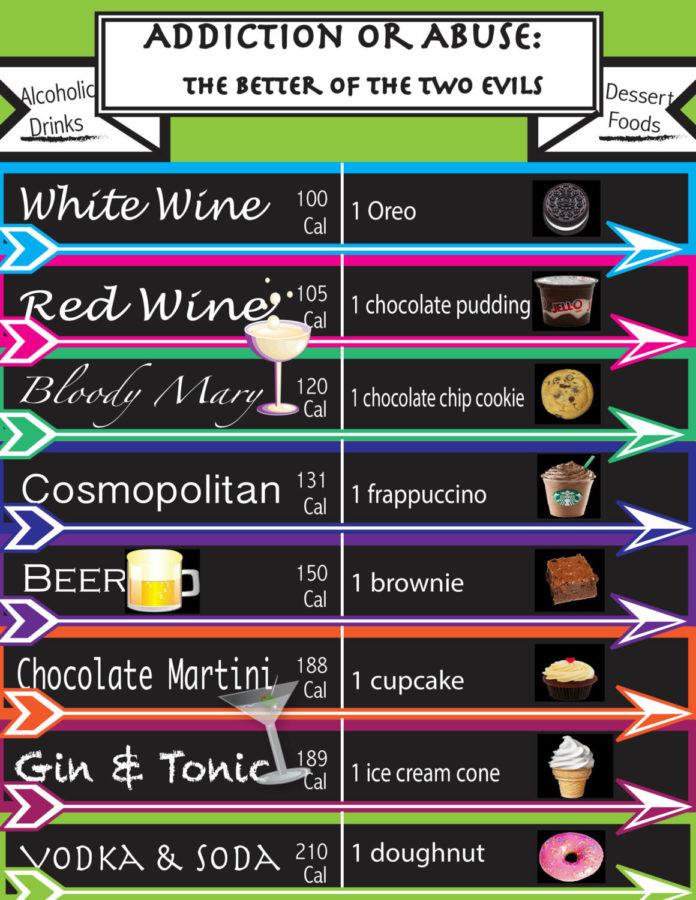Alcohol: Know nutritional facts before going out to drink
Jessica Kline/Iowa State Daily
What is the better of the two evils? Take a look at how some of your favorite alcoholic drinks compare to popular dessert items with the same nutritional values. A majority of alcoholic beverages are a poor source of nutrients, containing “empty” calories and very little essential vitamins and minerals.
October 1, 2014
What some students may not know is that a single shot of vodka is nearly 100 calories. Although for some this fact means nothing, it is important to know what is being put into your body every Saturday night out on Welch Avenue.
“Alcohol is such a social aspect in college,” said Nick Rew, senior in marketing. “It’s rare to find someone that doesn’t enjoy drinking with their friends.”
Brad Welch, junior in business, talks about his mentality when going out for a few drinks on a Friday night.
“I honestly never think about what I’m putting in my body when I drink,” said Welch. “I feel like girls are the ones that actually care about that stuff.”
When comparing men and women, men do tend to have more muscle tissue than fat. Because muscle weighs more than fat, a dose of alcohol will be diluted more in a man than women which results in higher blood alcohol concentration. However, when a person drinks and alcoholic beverage — regardless of gender — about 20 percent of it is absorbed through the stomach while 80 percent is absorbed into the small intestine.
Brian Vanderheyden, Iowa State prevention specialist, discusses why it is important for students to know what is being put into their body and potential mental impact alcohol can have.
“Alcohol holds very little nutritional value,” said Vanderheyden. “It doesn’t have any protein, vitamins, or minerals and actually can inhibit the absorption of vital nutrients.”
The Iowa State Prevention Services discuss strategies or ways that students can be safer if they choose to drink. Some of these strategies include alternating alcoholic beverages with water and pacing out drinks per hour.
“Research shows that roughly one in five students meet the criteria for an alcohol use disorder in a given year,” said Vanderheyden. “Coping with stress from college, dependence on alcohol to fit in with peers, and adjusting or transitioning to college are among a few of the reasons students may abuse alcohol.”
According to the National Institute of Alcohol Abuse and Alcoholism, there are studies that show heavy drinking and related problems are common in many people in their early twenties.
The NIAAA states, “a recent study shows that college students drink less frequently than their noncollege peers [3.7 percent of students report daily drinking vs. 4.5 percent of nonstudents]. However, when students do drink, such as at parties on the weekends, they tend to drink greater quantities than nonstudents.”
So, next time you’re out on Welch, take a second to think before you buy that third or fourth drink. Maybe just grab water instead. It’ll end up saving you money and from those oh-so wonderful hangovers.







